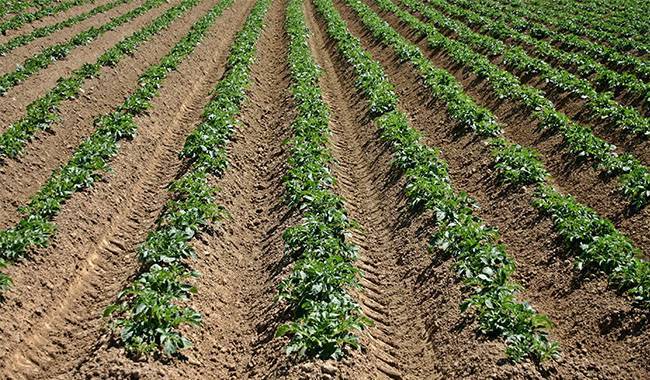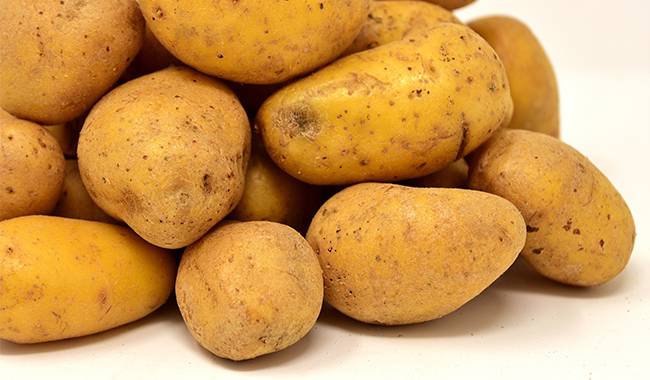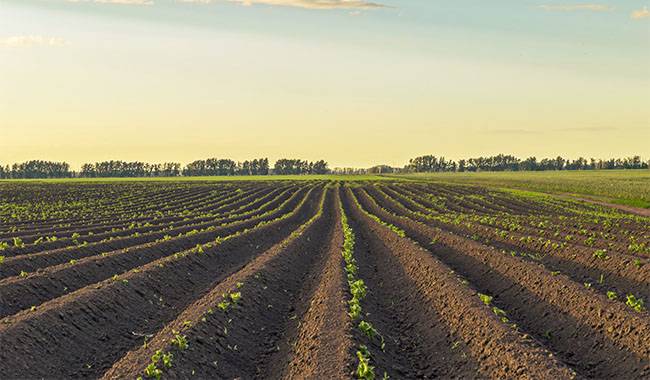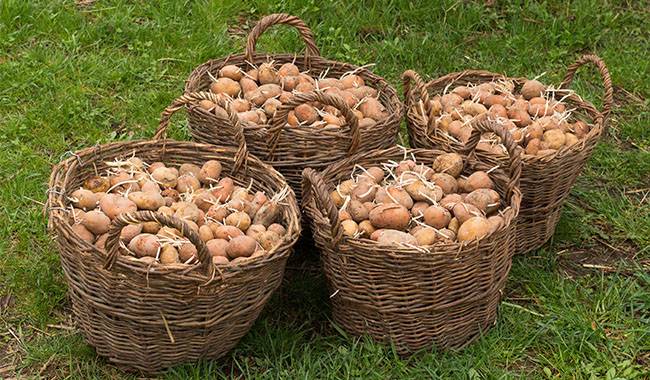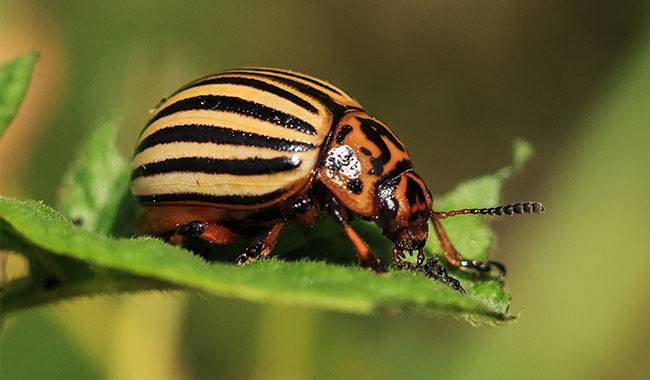
Colorado potato beetle is said to be spread by the wind. Adult members of the leaf-eating pest family can travel more than 15-50 km per day when propelled by the wind. In calm weather, independent flights can occur at speeds of 4-8 km/h. The main flight of adults begins in the fall, searching for suitable overwintering sites. Potatoes are the most consumed vegetable in the United States. According to the U.S. Department of Agriculture, U.S. farmers added more than 42 billion pounds, potato consumption in 2019 was 128 pounds per person. So how are potatoes protected from pests? Our article is dedicated to the peculiarities of Colorado potato beetle reproduction and, naturally, to the control and prevention methods of this disease.
LIFE AND REPRODUCTIVE PECULIARITIES OF THE COLORADO POTATO BEETLE
Adult beetles bury themselves in the soil over the winter to a depth of 27 inches (70 cm) or more above the frost level. Part of the adult beetle’s reserve stays in the ground for 2-3 years. When stable warm weather is established in the spring, and air temperatures rise to 59 °F (15 °C), the adults come to the surface. This is about the time when dandelions are blooming profusely and nightshade weeds (black and red nightshade, datura, belladonna, and Alena) are actively growing.
Voraciously devouring the young leaves of desirable weeds, the beetles later migrate from the devoured older plants to the young plants of tomato, eggplant, and potato leaves. Here, females lay 10-30 eggs in clusters on the lower side of 1-2 layers of leaves of cultivated plants.
This beetle is extremely fertile and feeds heavily. A single female beetle will lay 400-2500 yellow eggs in her lifetime. Each beetle eats more than 4 grams of young leaves in a month, and the larvae eat more than 1 gram, leaving only green lumps of skeletonized remains.
After 5-17 days, the dark brown adults hatch from the eggs, and within 15-27 days, they turn yellow-orange or bright orange. Finally, they enter the ground, where they pupate and emerge as young adults. In a single summer, the Colorado potato beetle can produce 2-4 generations, so 1 bush may harbor beetles of different developmental stages. The damage they cause can be up to 100% yield loss.
CONTROL MEASURES FOR COLORADO POTATO BEETLE
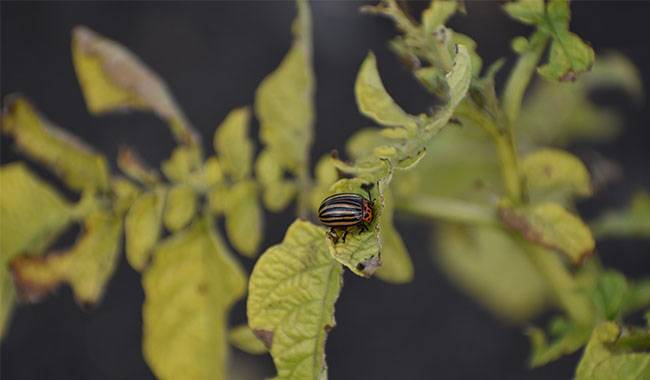
The control methods for the Colorado potato beetle are classified as below.
- Preventive.
- Biological control.
- Chemical control.
The most important role in reducing the number of leaf-feeding pests is preventive measures, including agricultural and other pest control methods. Traditional methods of pest control are of great help to farms.
Preventive
Agro-technical measures
An important method of controlling the Colorado potato beetle is good housekeeping. Potatoes and other vegetable crops (ideal for pests) must not return to the same place until 4-5 years. Therefore, crop rotation is necessary to optimally regulate the correct alternation of vegetable crops and promote timely cultivation and preparation of the soil for planting or sowing of the next crop.
It is necessary to do the following things.
- Form a crop rotation with as many crop varieties as possible to attract natural enemies of Colorado potato beetle (birds, ladybugs, beetles, and others) into the vegetable garden and to ensure that the Solanaceae plants return to their original position in no more than 4-5 years.
- Don’t rank before aubergines of the same family (e.g., potatoes after eggplants and tomatoes, and vice versa).
- The soil should be well watered before and after harvest to provoke weeds to germinate. After germination, apply mineral and organic fertilizers and dig the soil with a spade’s bayonet 10-12 inch (25-30 cm) over the black calcium soil and turn it into layers. Avoid excessive weed growth in the post-harvest vegetable garden.
- Keep the field clean of weeds during the vegetation period and use the latter as mulch after loosening the soil.
Traditional methods of protection
Before the advent of chemicals, farmers widely used methods of controlling the Colorado potato beetle based on observations of the pest’s developmental cycle and reproduction.
An old “novelty” in potato farming
Today, gardeners are again using the time-tested, old method of growing potatoes on mulch. To do this, a high layer of mulch (free of weeds, fertilized, and turned over) is raked over the plots prepared for potatoes since autumn. This can be fallen leaves, hay, straw, young (weedless) weeds, and other materials. In winter, they settle down under the natural decomposition process and the pressure of the snow layer.
In spring, the compacted layer of mulch is removed slightly. Then, potato tubers are placed and covered again with a layer of mulch to a height of 10-12 inches (25-30 cm). As shrinkage proceeds, the mulch is added, maintaining the height of the layer of mulched material.
Overwintering beetles catch the scent of fresh potato greens but cannot get through the mulch layer and die there. In the fall, the mulch is raked off the beds, and the tubers are harvested. In summer, the semi-digested mulch is spread over the plots and buried as organic fertilizer. According to feedback from large American estate owners and American farmers, this method of growing potatoes is virtually free of pest infestation.
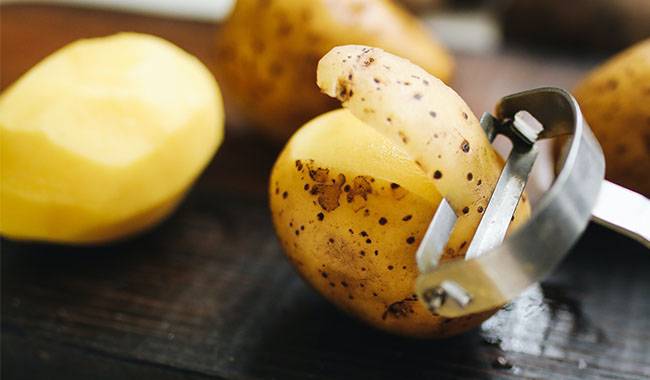
Infusions, decoctions, and baits
Infusions and decoctions of herbs and insecticides are not as harmless as most authors describe, providing traditional protection against pests. Therefore, they must be used with caution and safety precautions, especially in the case of asthma and allergies.
- After potato planting, spread cut potato tubers all over the plot (if the plot is small) during single plant germination. The beetles will smell the potatoes and crawl in. All that remains is to collect and destroy them.
- Various containers are buried in the potato field, the bottom of which is food for Colorado potato beetle – potato peels, especially those containing potato shoots. Should check traps once or twice a week. Trapped beetles are collected in a separate bucket, collected with a soap solution or paraffin dressing, and destroyed.
- On a small scale, you can greatly reduce the pest population by shaking them off into a tub and pouring a concentrated salt, paraffin, or other solution toxic to beetles in the bottom of the tub.
- Boil wood ash at a ratio of 2.2 lb (1 kg)/2.6 gal (10 l) of water for 0.5 hours and steep for 2 days. Add 40-50 g of laundry soap scraps (without bleaching properties) to the filtered solution and dilute the concentrate with 2.6 gals (10 l) of water after it has completely dissolved. Spray the plants with the resulting working solution. Repeat spraying if necessary, preferably after the emergence of adult Colorado potato beetle.
- Boil 200 g of dandelion flowers and horsetail in 2.6 gals (10 l) of water for 15-20 minutes. Cool and strain. Dilute the concentrate obtained from 0.13 gal (0.5 l) in a bucket of water and sprinkle it on the nightshade plants.
- A general-purpose walnut concentrate can be prepared to kill various leaf-feeding pests. In the fall, a galvanized bucket or wooden barrel is filled with fallen walnut leaves, green walnut shells, and then boiling water is poured over them. After winter, a concentrated walnut infusion is formed. Dilute 0.26-0.52 gal (1-2 liters) of the concentrate with 2.6 gals (10 liters) of water and sprinkle the plants with the desired concentration of the working solution. The concentrations were tested: dilute the working solution at different concentrations (1:10, 2:10, 1.5:10.) and spray 1-2 tomato, potato, and eggplant plants. Within 1-2 days, you can see if there are burns on the treated shrubs after applying the working solution. The treatment is very efficient.
Plant insecticide
Colorado potato beetle is good at distinguishing between the enticing smell of plants and the repellent smell. The latter is known as a natural insecticide. In the days when insecticides were not available, gardeners used this method of protection. Insecticidal plants include marigold, beans, sedum, bush beans, coriander, and garlic.
Planting these plants at the edges of beds and under individual bushes reliably protects vegetable crops from Colorado potato beetle. Note, however, that 1 or 2 plants will not cover the crop from pests.
Application of chemical protection measures
Biological agents
Biological agents are made based on bacteria or fungi. They are harmless to warm-blooded animals and cause limited harm to humans. Biological agents CruiserMaxx Potato/
Platinum, Actara, Endigo ZC, Voliam Flexi, Besiege, Agri-Mek SC kill mainly larvae. Their efficiency is related to weather conditions and requires repeated sprays every 20-25 days. Dosage and application methods are described on the package and the relevant website.
Chemicals
Among the chemicals, Decis-Profi, Confidor (Imidacloprid), Lightning, etc., are effective. The chemicals are most effective for planting during the period when the larvae are present in large numbers. As a rule, these agents are class 3-4 hazards and must be handled with great care, observing all personal protective measures. As with biological preparations, the preparation methods and application of working solutions are described in detail on the packaging and the relevant website.
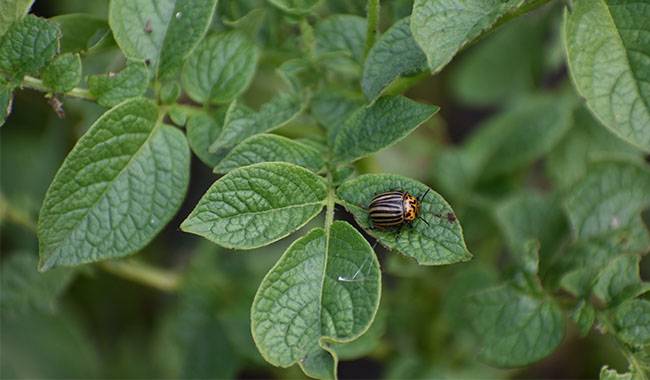
VARIETIES THAT ARE NOT AFRAID OF COLORADO POTATO BEETLE
You can always find potato varieties in your vegetable garden that are virtually immune to the Colorado potato beetle. Generally, these bushes have tough leaves with an upward-pointing blade that is sharply angled and exposed to sunlight all day. Save these bushes for potato seed.
Gradually, you will get a variety that is more resistant to beetles than the original variety. The beetles affect mainly sick and weakened bushes, whose leaves spread horizontally and on which eggs are very easily laid.
In the 1990s, breeding efforts to develop pest-resistant varieties began in Europe and the United States. Currently, plant breeders are proposing 100% of varieties resistant to Colorado potato beetle infestation.
Canadian researchers have developed new potato varieties resistant to the Colorado potato beetle. According to Agriculture and Agri-Food Canada (AAFC), naturally occurring chemicals in potato leaves may be the key to a new approach to controlling the Colorado potato beetle.
AAFC research scientist Helen Tai uses leaves growing on wild potato relatives (which the beetles do not eat) as a new way to keep the pests at bay.
Many plants in the potato family contain natural defenses against pests. Using mass spectrometry and other tools, Tai has identified the active components in the leaves of wild potato plants that make beetles avoid them.
Potato breeders at the Fredericton Research and Development Center used wild relatives to crossbreeding with common popular potato varieties to develop a potato with inherent beetle resistance. Not all of them crossed potatoes carry this resistance, but the traits Tai discovered can determine which potatoes carry this resistance.
“Breeding new potato varieties that are resistant to beetle feeding is now at an advanced stage, opening up a new era for potato growers to reduce pesticide spraying for insect control,” Tai said.
She says that using beetle-resistant varieties coupled with integrated pest management practices is another way to mitigate pesticide resistance. These resistant potato varieties could provide growers with an option to avoid serious crop losses.
Two of these new resistant potatoes are already in the breeding program and available for industry trials.
Pest-resistant potato varieties
- Arran Pilot
- Cara
- Estima
- Kestrel and Blue Kestrel
- Pentland Javelin
- Sarpo Axona
- Swift
- Wilja
Disease-resistant potato varieties
- Accent – scab resistance
- Arran Pilot – scab resistance
- Cara – blight resistance
- Charlotte – tuber blight and slug resistance
- Desiree – scab resistance
- Golden Wonder – scab resistance
- Jazzy – good tuber blight resistance
- King Edward – scab resistance
- Markies – blight resistance
- Nicola – scab resistance
- Sarpo Axona – great blight resistance
- Sarpo Mira – great blight resistance
- Setanta – great tuber blight resistance
- Swift
- Valor – blight resistance
- Vitabella – excellent blight resistance
Best potato varieties for storage
- Pink Fir Apple – one of the few salad-type potatoes that can store for three months
- Kerr’s Pink
- Majestic
- Maris Piper
- Sarpo Axona – four months or more
There are few potato seeds available for large-scale planting, but gardeners can already offer garden varieties for their plots. Planting materials can be purchased in specialized stores or online stores on specialized websites to grow ecologically clean basic food at home.
Among the varieties offered, pay attention to the variety Swift. It is highly resistant to drought and is not affected by pests and diseases. Among the early varieties, Jazzy is in the lead. It is highly productive, tasty, and sturdy, producing up to 12 tubers per bush, each weighing 100-200 grams.




